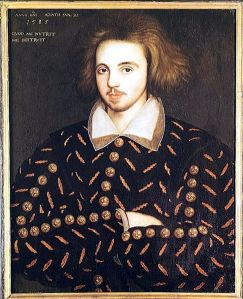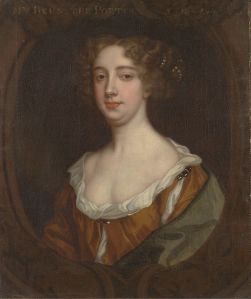
When Shakespeare was born, there was no theater in England. Then very soon, under Elizabeth I, the greatest theater in the history of the world was being performed in London. Thousands of people visited the theater every week. However, in 1642, the theaters were closed. What happened?

England had become Protestant under Henry VIII. Mary I made England Catholic again, but it switched back to Protestantism again. Under Elizabeth I, a very radical, extreme form of Protestantism was developing. It was called Puritanism.

The Puritans were not satisfied with the state of the church in England; they thought it was still too Catholic, and therefore corrupt. They wanted a simpler, more serious church. They did not like people having fun by attending the theater and hearing the ideas of playwrights. For them, reading the Bible, and working at being a good person needed simpler values.

The Puritans valued the individual’s freedom to follow his or her conscience. They did not like the compromises that had to be made in England. For that reason, Puritans were attracted to a new life in New England in America. They wanted to be free to govern themselves and follow their own consciences. 102 Puritans went on the first Mayflower voyage to America.

Elizabeth I eventually died childless and the Tudors, who originated in Wales, were replaced by a Scottish dynasty, the Stuarts.

The Stuarts and the radical Protestants were a very bad match. The Stuarts felt that Kings should be like little Gods on earth. When James I died in 1625, Charles I became King. He regarded himself as the father of the nation and believed that he should be obeyed. His religious policies were very unpopular with Protestants in general but the Puritans were outraged. The Puritans were getting stronger in Parliament during the time of the Stuarts; it was a period of intensely serious debate. The Puritans hated the King ordering them around and telling them what to do.

Eventually, Parliament rebelled and the First Civil War began in 1642. The King was defeated and Parliament expected him to follow their rules. However, the King tried to escape and the Second Civil War began in 1648. These wars were very violent and families and friends were split as people tried to decide whether they valued freedom and self-determination more than loyalty to the King. The Parliament supporters are often referred to as Roundheads, and the King’s supporters are often called Cavaliers.

The King lost the Second Civil War, too. This time he was tried and executed. Now England was a Republic with no monarch! Oliver Cromwell, a Puritan Parliamentarian became 1st Lord Protector.

England had no King! However, England’s experiment as a Republic did not last long. Many people felt that England needed a King or Queen and Charles II was invited to become King of England, Scotland, and Ireland in 1660.

Even so, the radical Protestant influence and the importance of conscience strongly influenced John Milton’s Paradise Lost (1667) and John Bunyan’s Pilgrim’s Progress (1678).

The spirit of Puritanism was also carried over into the colonization of America. Hawthorne’s The Scarlet Letter deals with a simple Puritan community’s notions of dignity and repentance at precisely the same time that the Civil War was raging in England.

Theaters were reopened in 1660. Charles II encouraged a sense of fun in what is now known as Restoration Comedy. These comedies often contained sexually explicit scenes. The ethos of Restoration Comedy was that aristocrats were expected to have fun, with lots of womanizing.

This was a very different atmosphere from the work of John Milton, John Bunyan, or Nathaniel Hawthorne for that matter! It was also very different from the uplifting educational purpose of Shakespearean drama. However, Restoration theater was very popular at the time, with the introduction of the first professional actresses; Nell Gwyn was perhaps one of the greatest celebrity actresses of all time. She was also a mistress of Charles II for a long time.

Restoration theater also saw the first professional female writers. Aphra Behn was a popular dramatist of the time. Her bawdy dramas are not taken very seriously today. However, she was to began a rich tradition of female writers in English literature.
